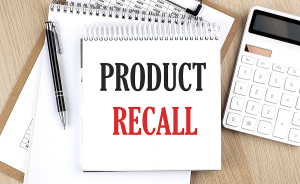by
John R. Fischer, Senior Reporter | January 27, 2023

Lack of communication to patients about at-home medical devices that have been recalled makes this the number one risk on ECRI's annual Top 10 Health Technology Hazards report.
Patients rarely receive recall notices about at-home medical devices, continuing to use them without realizing the potential harm they pose. Even when they do, they are often unsure if they should continue using these solutions.
This is because device manufacturers and providers do not proactively contact patients about homecare device recalls, leading patients to learn about them long after they are implemented, and potentially from unreliable sources.
This communication gap gives "recalled at-home devices" the dubious distinction of ranking number one in ECRI’s annual list of Top 10 Health Technology Hazards.
“Even if patients do receive notifications, the language may be jargon-heavy and perplexing, and patients may have difficulty determining whether their device is affected or what to do about it,” said Dr. Marcus Schabacker, president and CEO of ECRI, in a statement. "Without clear, understandable information about a product recall, patients cannot accurately assess the health risks and may harm themselves by continuing to use an unsafe device, or by inappropriately stopping use of a device."
In June 2021, a recall was
initiated for 5.5 million continuous positive airway pressure (CPAP) and bilevel positive airway pressure (BiPAP) machines from Philips. The recall was attributed to the discovery that polyurethane foam in the machines could degrade, releasing small carcinogenic particles that can enter the airways.
Some patients went several months before knowing about it, and were confused by the technical language in the recall notice on whether they should continue using their devices and how to address the issue.
Other hazards on the ECRI list include:
- Growing number of defective single-use medical devices
- Medication errors from inappropriate use of automated dispensing cabinet overrides
- Death from undetected venous needle dislodgement or access-bloodline separation during hemodialysis
- Care disruptions from failure to manage cybersecurity risks in cloud-based clinical systems
- Fatal air emboli from IV solution bags, because of inflatable pressure infusers
- Cross-contamination from confusion surrounding ventilator cleaning, disinfection requirements
- Burns from common misconceptions about electrosurgery
- Cognitive overload, missed critical events due to overuse of cardiac telemetry
- Risk recurrence due to underreporting of device-related issues
An independent nonprofit focused on medical technology safety, ECRI’s biomedical engineers, clinicians and healthcare management compiled the list using information from incident investigations, reporting databases, and independent medical device testing.
The report includes detailed steps to proactively prevent adverse incidents resulting from these hazards. For addressing the gaps in recalling at-home devices, ECRI encourages manufacturers to develop easy-to-follow device registration instructions, write simply-worded recall notices, maintain up-to-date databases on device distribution, and designate staff to ensure that recalls reach home users.
“All stakeholders — patients, healthcare providers, and manufacturers — have a role to play in building a recall process that meets the needs of home users,” it said in the report.
